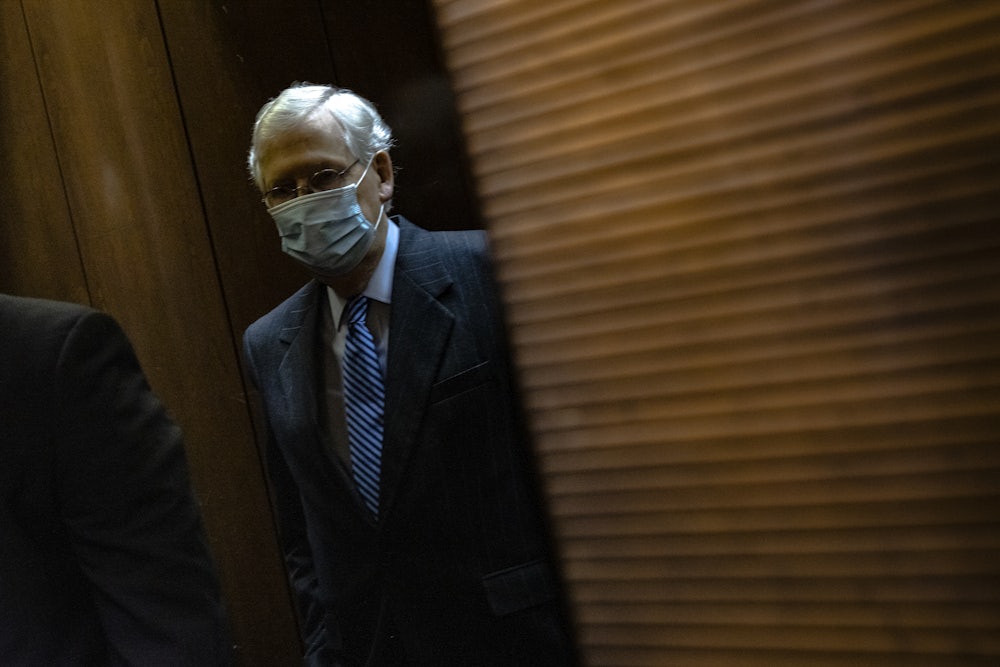In a recent interview with Eater, San Francisco restaurant owner Pim Techamuanvivit articulated the bind she currently finds herself in: The pandemic has cratered her business at the same time that it’s made her staff’s continued employment—their salaries, their health insurance—that much more urgent. It’s an impossible situation. “I don’t understand why it’s up to me as a small-business owner to search my conscience every month to decide whether or not to support my employees,” she said. “Where is the conscience of this government, of this social system to support people? Where is the conscience of the country?”
Her point applies beyond just her industry. There is no way that business owners, or individual workers or consumers, can fix the crisis. We’ve been forced into this untenable situation by government incompetence and outright malice. And things are about to get much, much worse.
The fall surge in Covid-19—precisely the thing that both public health experts and anybody with common sense warned would come unless drastic action was taken—is here. South Dakota just posted a 54 percent positivity rate. Texas became the first state to surpass a million positive tests. Cases have been rising day to day for the past week and a half in New York City.
There is no doubt about what’s needed to contain the damage: masks, social distance, and federal funds to help people—workers and business owners alike—stay the hell home while we ride out the latest surge. But instead, the president is a Covid-surviving Covid denier, and congressional leadership is either psychopathically committed to mass death as an acceptable outcome or too useless to intervene as millions go without desperately needed aid.
And so where we find ourselves now—faced with uncontrolled spread in some parts of the country, with new lockdowns going into effect—is where we will keep finding ourselves unless the government steps in at scale to prevent mass death and economic destruction.
Right now, more people are applying for unemployment benefits on a weekly basis than during the height of the Great Recession. Nearly 100,000 small businesses are estimated to have gone under since the pandemic began in March. Another eight million people, left with nowhere to work and no more federal assistance, have “slipped” into poverty. At the same time, the Treasury Department reported in August that only 18 percent of Cares Act funds designated for states had been spent.
As The American Prospect’s David Dayen reported in June, the Cares Act required that the funding only be used for emergency coronavirus spending—not to offset other parts of a decimated state budget. This pushed many states and cities staring at a budget deficit due to the sudden decrease in tax revenue to engage in sped-up reopening practices, which Dayen attributed to being “a direct result of not having any guarantee from the outset that state and local budgets would be taken care of.”
The premature reopenings led to increases in cases during the summer, spurring longer intermediary reopening phases in the early fall, which helped too many people feel overly comfortable with risking their health to go to brunch—subsequently driving restaurateurs, staring at six months of accrued margin losses and no hope of a federal cushion, to push their workers to keep coming in. It’s a cycle. This is what the Cares Act more or less built.
This is also how, in the same week, you end up with Missouri’s governor begging the state legislature to allow him to spend the roughly $1 billion in federal funds that the state has left sitting on the shelf, and Minnesota asking the feds to reimburse it for a cold storage facility the state bought to store the bodies of Covid-19 victims. Compounding this gridlock is the idiocy still on full display by conservative leaders: Republican governors, like Oklahoma’s Kevin Stitt and South Dakota’s Kristi Noem, who, despite seeing massive surges in positive cases and hospitalizations, refuse to do something as simple as issue a mask mandate. And even if a vaccine was released tomorrow, states aren’t sure they’ll have the money to pay for the medical infrastructure required for widespread distribution.
It doesn’t have to be this way. As Dr. Michael Osterholm, a medical adviser to President-elect Joe Biden, told CNBC, the situation, even with cases on the rise, is still manageable, but only with immediate action. The country could enter into a four-to-six-week lockdown, and the federal government “could pay for a package right now to cover all of the wages; lost wages for individual workers; for losses to small companies; to medium-size companies; or city, state, county governments,” Osterholm said. (Democratic Representative Ro Khanna has been pushing for a $2,000 monthly stimulus check since April, but as with many stimulus plans in Congress, the Republican Senate has blocked the way forward.)
The key word in all of this is “could.” Breaking this cycle is so infuriatingly simple—Congress could pay workers to stay home! Governors could tell people to Skype in with Grandma! Everybody could wear a fucking mask!
Without the widespread adoption of these measures, though, we’re looking at the cycle of political malfeasance that’s going to continue to claim lives—needlessly—while tanking the economy all the same. Which means we will be back here again—and again and again. What’s that saying about the very definition of insanity?
